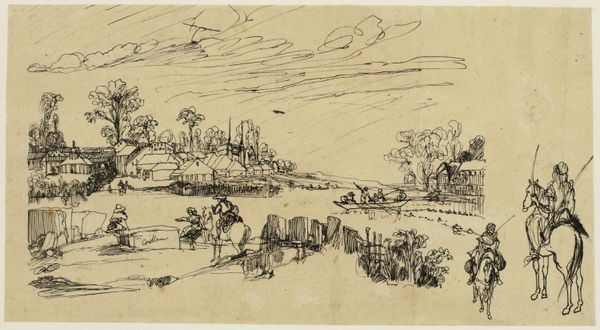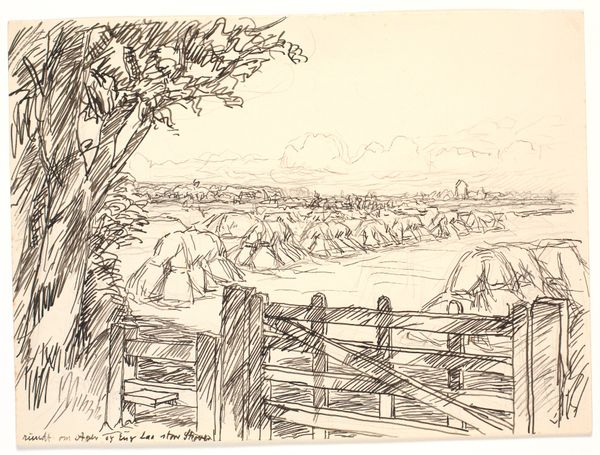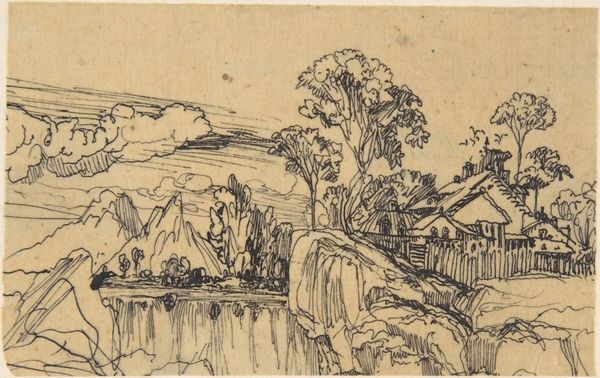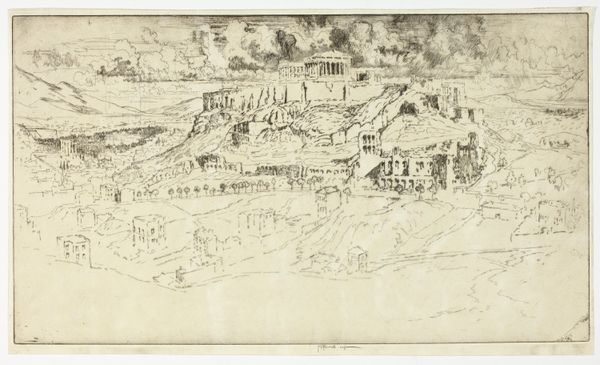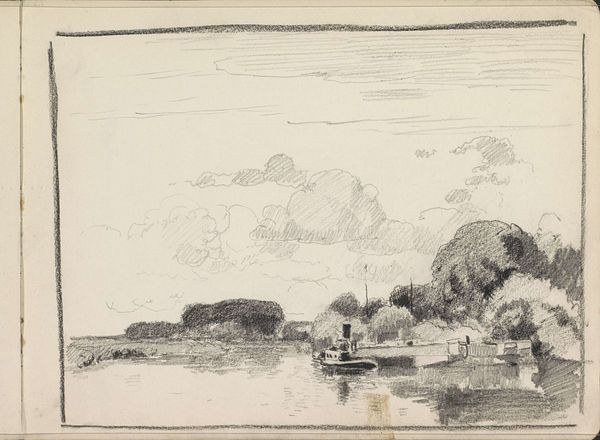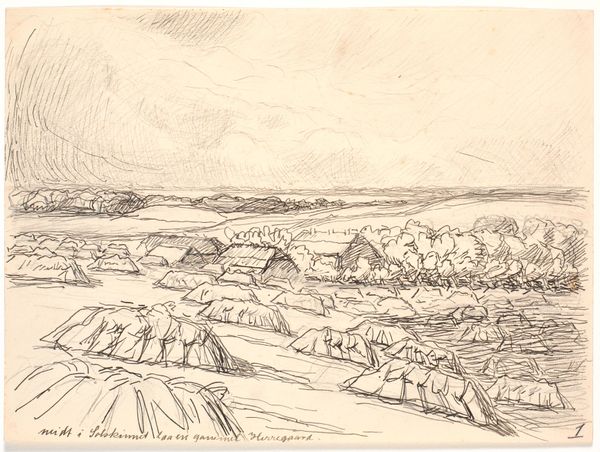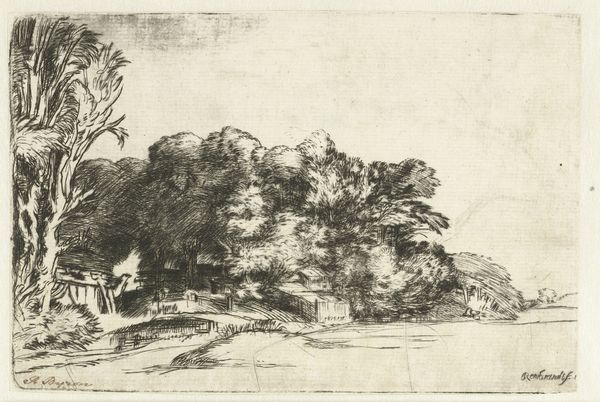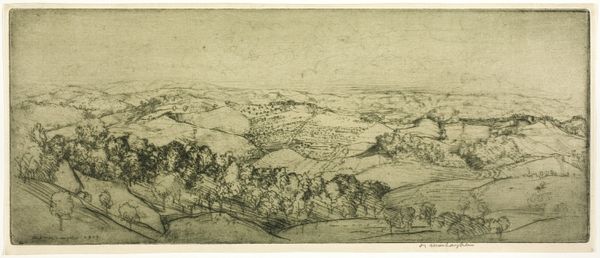
drawing, print, ink, engraving
#
drawing
#
pen drawing
# print
#
landscape
#
ink
#
northern-renaissance
#
engraving
Dimensions: sheet (cut within platemark): 8.7 x 17.2 cm (3 7/16 x 6 3/4 in.)
Copyright: National Gallery of Art: CC0 1.0
Editor: So, this is Augustin Hirschvogel’s "River Landscape with a Footbridge" from 1546, rendered in ink, I believe as a print, maybe an engraving. I'm immediately struck by the detailed linework and the panoramic view. It's a bit like looking into a tiny, self-contained world. What catches your eye when you look at this piece? Curator: Well, I see a confluence of social and aesthetic concerns characteristic of the Northern Renaissance. Hirschvogel, working in this period, was part of a broader movement that began to portray the natural world with greater accuracy, yes, but it was more about civic identity. Do you notice how the river seems to bisect two distinct settlements? Editor: I do, almost like two communities in dialogue. Curator: Exactly. Landscapes at this time weren't just pretty scenes, they were powerful tools in constructing and conveying civic pride. How would you characterize the buildings within this scenery? Editor: Well, on the left they are humble, and the other side with the stone tower feels established... maybe affluent? Curator: Precisely! Printmaking allowed artists like Hirschvogel to disseminate imagery widely, standardizing visual representations of locales. Therefore creating idealized, propagandistic imagery. A simple engraving served the important cultural work of defining civic identity in the 16th century. Editor: I never considered landscapes as active players in the construction of identity. I just assumed artists painted pretty landscapes to please patrons. This gives me a completely new perspective. Curator: It shifts our perception, doesn’t it? Seeing art as a function of its socio-political moment. Editor: Definitely food for thought. Thank you.
Comments
No comments
Be the first to comment and join the conversation on the ultimate creative platform.
